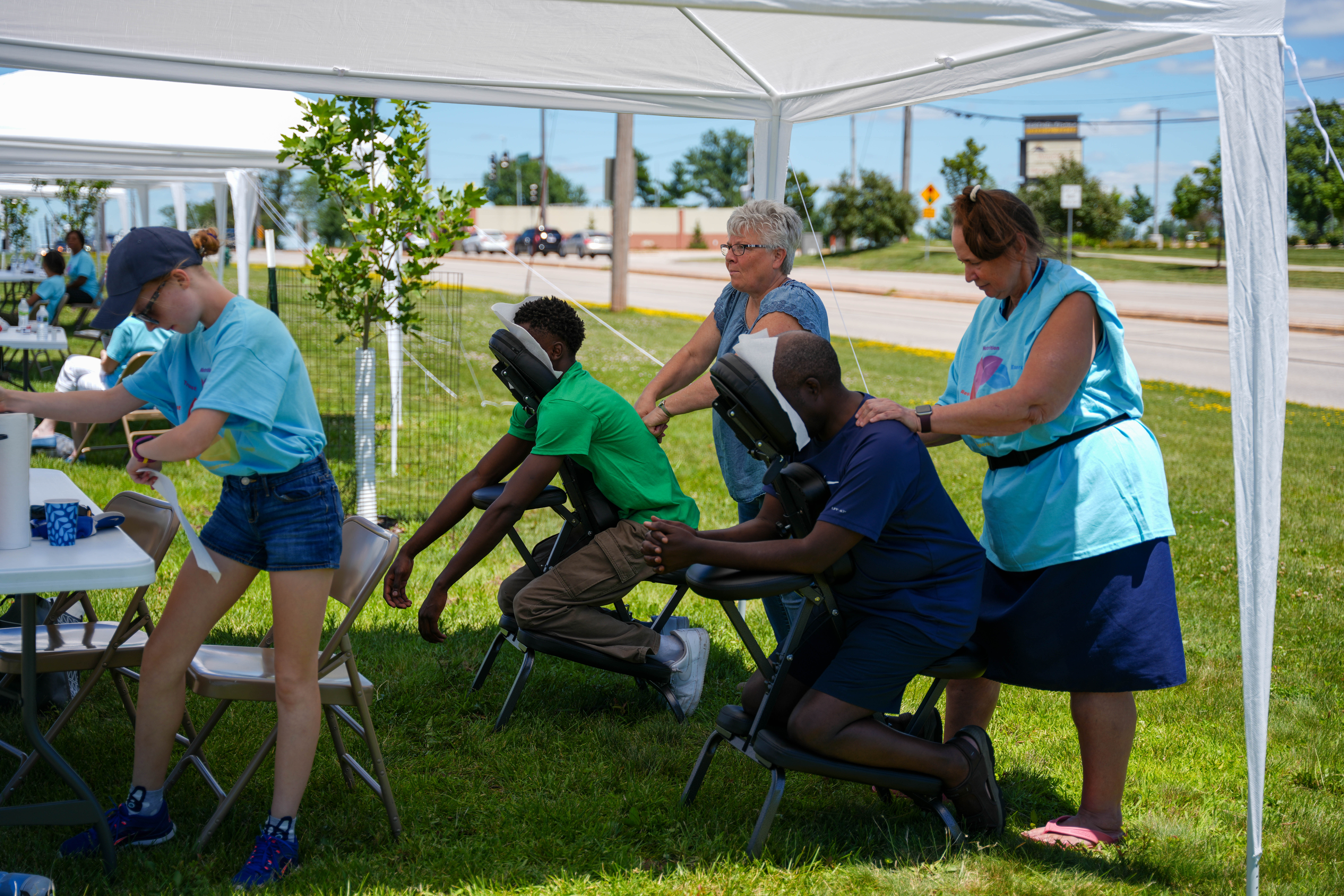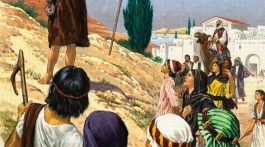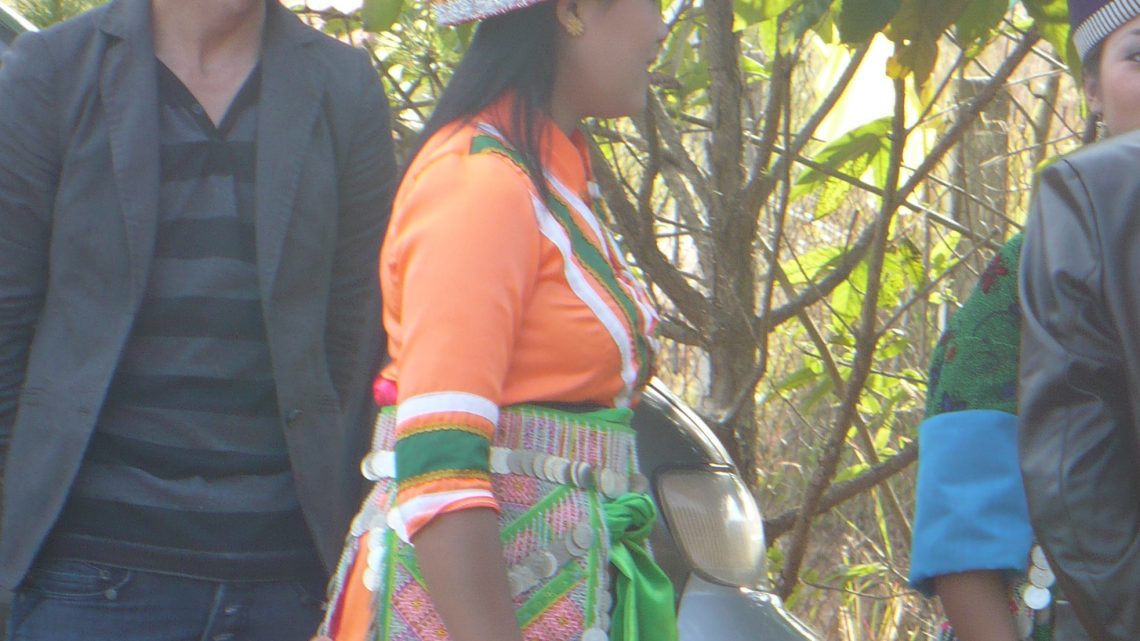Since our daughter, Kelti, is teaching at a school in Laos we decided to spend our holiday visiting her. It was an amazing experience for our family since we had never traveled to an Asian country before. This set of blogs describes our adventures and lessons from them I want to remember.
Out and About
After our first walking trip to the market we all agreed that we would be able to see the city more efficiently if we rode bicycles. It’s too much of a hassle to take a tuk-tuk all the time (three-wheeled motorcycle pulling a cart with benches) and we wanted to save our taxi money for when we ventured outside the city. So bicycles it would be! We could go at our own pace and stop whenever we wished.
We were able to borrow the bicycles of some other teachers who were out of town for the holidays, and Kelti had a chain long enough to lock our back tires together so they wouldn’t be stolen while we were sight-seeing. These were basic model bikes—no gears—just brakes and a bell and a flashing light for nighttime riding.
I admit to being a little nervous when we first set out because I had watched the traffic and knew that the rule of the road is merge. No stopping when making right turns, or worrying about staying in your lane or waiting for traffic if someone stops ahead of you—no, you just keep going. You use your little bell if you are coming up behind a person walking in the road or a bicycle going slower than you—not so they will move over but so they know you are there.
When you encounter a car that has stopped in the road because the driver wants to talk to someone or buy something at a shop (which happens all the time), you just go around it. And the driver beside or coming up behind you knows that you will go around it so they give you a few more inches of space, or maybe an extra foot if there is no one on the other side of them.
Kelti confidently told me, “Mom, they are not going to hit you—just keep merging.” And while we had a few close calls, we never did get hit. Still, it was rather disconcerting to see motorcycles coming at you the wrong direction in your lane or to feel the wind on your arms and legs from large trucks passing you only inches away. Someone told us that as long as we didn’t make eye contact with another merging driver, we had the right of way. That didn’t do much for my comfort level! We had also been told that medical care in Laos is unreliable and everyone who can goes to Thailand for treatment, unless it’s an emergency. I was pretty sure that being splattered on the road would be considered an emergency.
Actually, bicycling was a great way to see the city. We visited a famous temple complex (more about that in the next post) climbed up into the Laos version of the Arch de Triomphe, which looks quite familiar to those who have toured Paris, and explored a few other sites in the city.
From City to Mountains
The next day we boarded a minivan, along with way too many other people, and headed for the mountains. We came to realize there was a reason those vans are padded on the walls and ceiling. There are no seat belts, so strapping yourself down isn’t an option. You just bounce around like popcorn. And the drivers take the mountain curves much faster than I would have preferred, especially since one always has to be watching for cows and chickens in the road.
One very interesting custom we were able to observe happening in several locations as we drove along was the choosing of wives. It was the New Year celebration for the Hmong hill tribes and the girls who want to get married this year were dressed in their colorful traditional costumes. Most of the girls were also carrying umbrellas to protect them from the sun, since their belief is that the whiter your skin, the more beautiful you are. (Some girls and women even carry umbrellas while riding bicycles and motorcycles.) The girls and guys stand in lines facing each other and toss a small ball back and forth. I never learned exactly how it all worked, but somehow during the process they become engaged. We found out later from an English-speaking tour guide that Hmong girls get married as young as 13 and that men can have more than one wife. Education stops when a person marries, so this has a big impact on the standard of living.
We saw many interesting things in the countryside and the mountains. We watched local fishermen casting their nets in the lakes and rivers and saw lots of dried fish for sale. We also saw beautiful vegetable gardens along the streams, fenced to keep out free-ranging animals. And we would not have been able to go caving or kayaking on the Nam Song River if we hadn’t left the city, so traveling out was worth it.
Lesson #3
As I consider the traditions and customs we observed, I hope I will always show respect for other people’s ideas and ways of doing things, particularly when they are different from my own. I want to be sensitive toward other cultures and open to learning new things. I try to imagine what heaven will be like, when every nation, tribe and people group gathers around God’s throne to worship Him. He has created us all in His image, and each one is equally valuable in His eyes.










